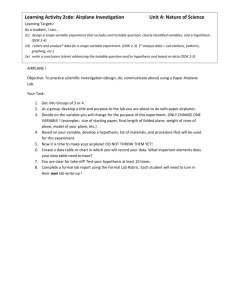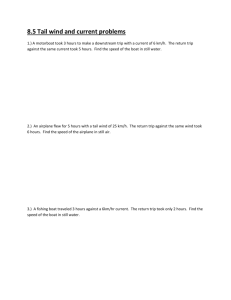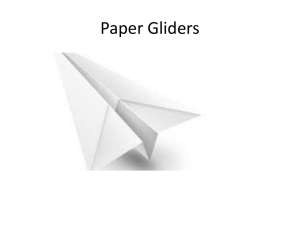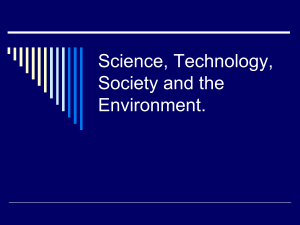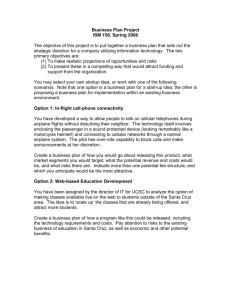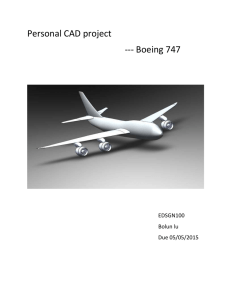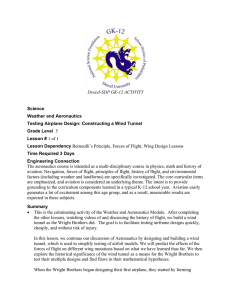Document 10519417
advertisement
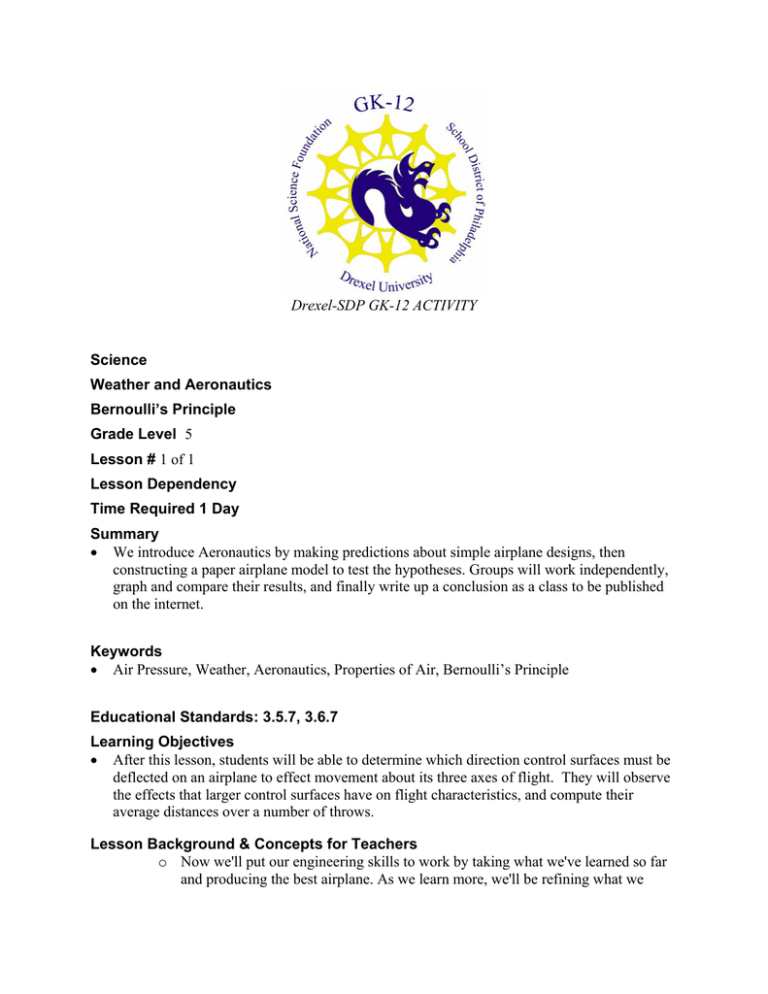
Drexel-SDP GK-12 ACTIVITY Science Weather and Aeronautics Bernoulli’s Principle Grade Level 5 Lesson # 1 of 1 Lesson Dependency Time Required 1 Day Summary • We introduce Aeronautics by making predictions about simple airplane designs, then constructing a paper airplane model to test the hypotheses. Groups will work independently, graph and compare their results, and finally write up a conclusion as a class to be published on the internet. Keywords • Air Pressure, Weather, Aeronautics, Properties of Air, Bernoulli’s Principle Educational Standards: 3.5.7, 3.6.7 Learning Objectives • After this lesson, students will be able to determine which direction control surfaces must be deflected on an airplane to effect movement about its three axes of flight. They will observe the effects that larger control surfaces have on flight characteristics, and compute their average distances over a number of throws. Lesson Background & Concepts for Teachers o Now we'll put our engineering skills to work by taking what we've learned so far and producing the best airplane. As we learn more, we'll be refining what we o o o o o o o o know and ultimately building a wind tunnel and a real airplane model, that we'll test and graph. For now, let's start with the basic forces of glider flight (Bernoulli's Principle) and control surfaces that hopefully you remember. We have some guides that you can use, or you can start from scratch and make your own! You'll be measuring the distance that your airplane can fly, and measuring your precision landing ability by landing as close as you can to a point in the room. The winner in each category will be the plane that flies the farthest, and the one that lands closest to the point. You can try 4 times, graph your results and find the average. As a group, we'll talk about what we learned and a volunteer will write up our results as a class for our web site! Whether you go online and find an airplane model, or use one of mine, or try your own, please write your hypotheses about the model you'll be building. Try changing the wing, body and tail shape and size and record the changes to your data in a table for graphing. Build your airplane based on the guesses you made! HINT - Be creative! Try adding weights, folding differently, make changes! As you make changes, write it down so that you can give advice to the rest of the class. If you want to, try going online to look some things up! Launch your airplane 4 times and measure the distance. Record them on your graph paper, graph the distances, and compute the average on your graph paper. What was your best launch? Launch your airplane 4 more times and measure the distance from the point we pick. Record this on your graph paper as well, and graph, computing the average again. What was your best launch here? Compared to the rest of the class' results, what effects do large wings and a large body have on the airplane? Why do you think bigger is better? Why might smaller be better? Challenge: What is the best way to take off and land an airplane? Into the wind or with the wind? References o NASA 557 757 Glider Kit (http://quest.arc.nasa.gov/aero/teachers/Kit.pdf) o Sabertooth Paper Airplane (http://www.geocities.com/chouhung/saber.html) o "The Best" Paper Airplane (http://www.zurqui.com/crinfocus/paper/air-bld1.html) and Guide (http://www.zurqui.com/crinfocus/paper/guide.pdf) o Flying Techniques and Tips (http://www.zurqui.com/crinfocus/paper/air-fly.html) o AIAA / FAA Aeronautics Activities for Kids Book (http://www.aiaa.org/kidsplace/kidsplacepdfs/sciact.pdf) o Graph Paper (http://www.mathematicshelpcentral.com/graph_paper/files/Form2A.pdf) Author William Mongan Date 9/11/2007 2
